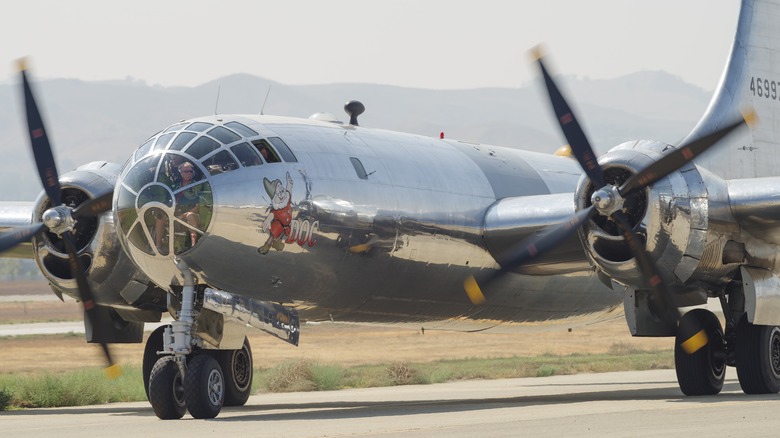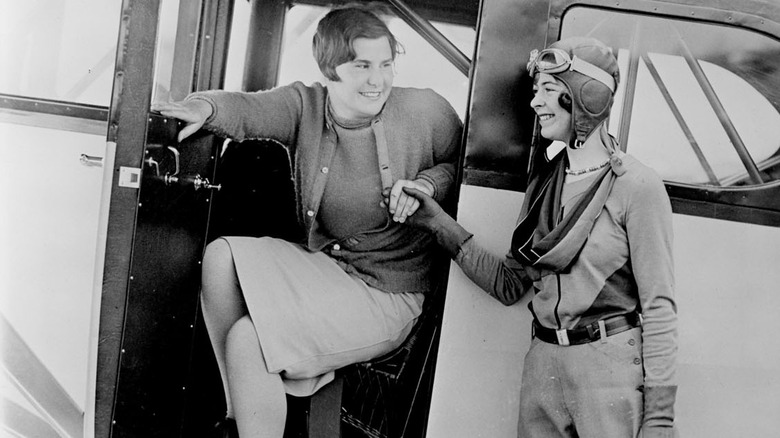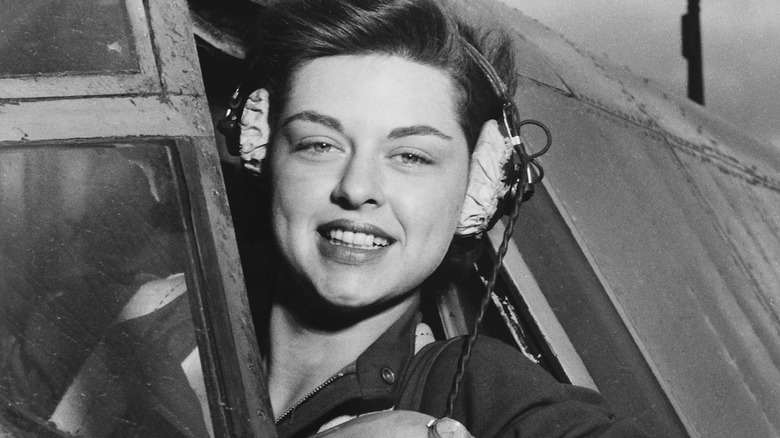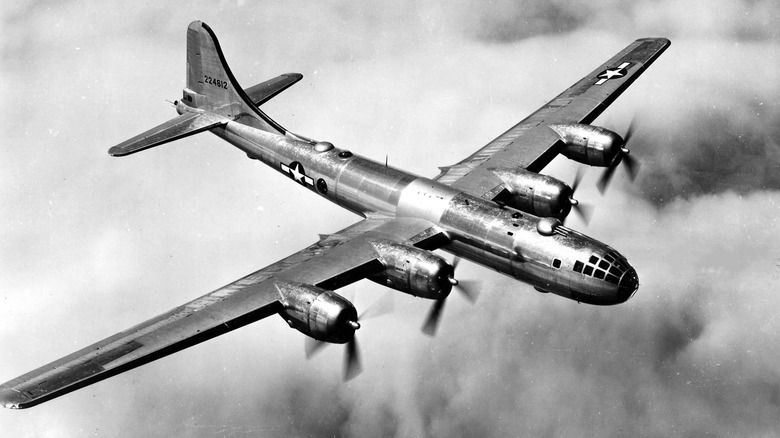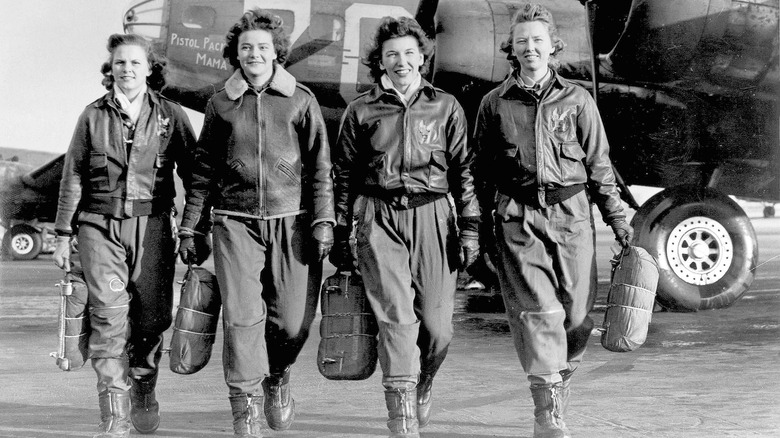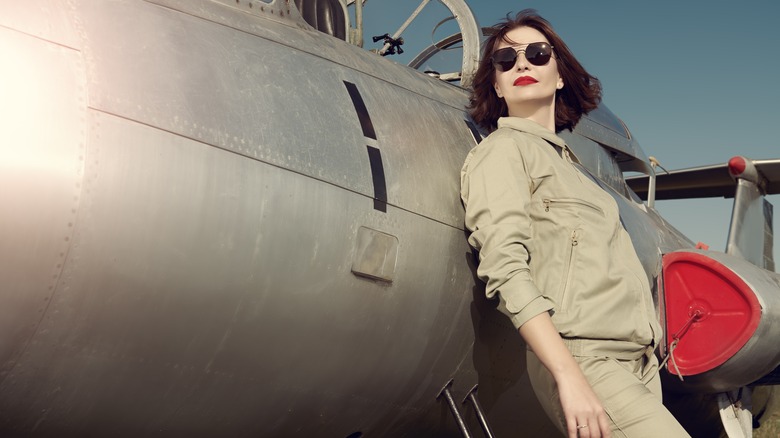How Two Women Pilots Became Trailblazers In US Military Aviation
For centuries, warfare was largely considered the domain of men. In fact, when women did engage in warfare, it was so far outside the norm that it made written history; Live Science compiled a list of warrior women, who weren't just legends but who were real and whose exploits were documented in the historical record.
In modern military forces — and here "modern" means the last two centuries or so — women have largely been confined to supporting roles, when they've been allowed to participate at all. For example, according to the USO, during the Revolutionary War, colonial women accompanied men on their journeys, mending clothes, foraging for food, cleaning weaponry, and so on. By World War I, women were openly serving in the U.S. military rather than unofficially acting on the sidelines, and by World War II, all four branches of the military had set up women's auxiliaries or were directly accepting women.
Nevertheless, even as recently as World War II, when women were risking their lives (and even being taken as POWs, per Military.com) near the battlefields, they struggled for acceptance and recognition even after the war.
However, two women whom you may not have heard about in your history books actually dared to go where men wouldn't, and paved the way for the bombings of Hiroshima and Nagasaki that ultimately ended the war.
Women and flying go way back
Humans have been flying powered aircraft since the Wright Brothers' first flight in 1903, and women have been piloting those aircraft for almost just as long. There is absolutely nothing, physiologically, that makes women (and teen girls) any less capable of flying an aircraft than their male counterparts are, although in the early days flying required physical strength, dexterity, stamina, and the ability to think on your feet — all qualities required of an athlete.
As such, flying was considered as much of a sport as it was a job or a pastime; indeed, the first female honored on a Wheaties box was a pilot: Elinor Smith (pictured above, with a companion) was an adult woman at the time of the honor, but she'd made a name for herself as a pilot when she was still in her teens.
By 1939, when it was looking like World War II was going to be a much bigger problem than anyone anticipated, a woman named Jackie Cochran hit upon the idea of bringing women into flying roles in the military. As Texas Woman's University reports, Cochran wrote to both first lady Eleanor Roosevelt and various military commanders, pleading her case. And before long, women were flying for the U.S. military.
The Women Airforce Service Pilots (WASPs)
As mentioned previously, there was a time when, if a woman provided a role in warfare in the United States, it was unofficial at best, and a secret at worst. For example, according to Smithsonian Magazine, hundreds of women served as spies, for both the Union and the Confederacy, during the Civil War.
The demands of World War II, however, meant the availability of men who could fight was quickly becoming exhausted, and women were soon being accepted into women's auxiliaries attached to each service, such as the Navy's WAVES and the Army's WACs. The Air Force wouldn't become its own branch until 1947 (after the passing of the National Security Act of 1947); prior to that, the branches had their own flying corps (as they still do).
The Army, according to Texas Woman's University, merged two separate women's flying groups together in 1943, forming the Women's Airforce Service Pilots (WASP) program. And while many of the women in this program worked in service roles (mechanics, radio operators, and such), there were actual women pilots in this program who flew aircraft. Per TWU, "The WASP logged more than 60 million miles and flew every plane the Army Air Forces possessed and every type of mission a male pilot flew during WWII except combat."
The B-29 Superfortress
Victory in both theaters of World War II (viz, the Pacific and European theaters) was accomplished by a variety of factors: ground combat, naval warfare, and air warfare included. And perhaps no aircraft played a bigger role in the Allies' victory than the Boeing B-29 Superfortress (pictured above). So important, advanced (for the time), and stalwart was the aircraft that it was even used in the Korean War, according to the Museum of Flight.
However, when it debuted in 1942, it was a flying death machine, for both the victims of its bombs on the ground and the personnel inside the aircraft. According to War History Online, it wasn't fully tested when it debuted, its engines were unreliable, and it was prone to catching fire. Regardless, desperate times call for desperate measures, as the old saying goes, and another old saying says that something is better than nothing. That means that, flaws and all, the machine was going to be pressed into service.
Unfortunately, male pilots steadfastly refused to step into it.
Two women shame their male colleagues
These days, the idea of shaming men into doing something by comparing them to women ("if these women can do it, then why can't you?") is not considered best practice. However, things were quite different in the 1940s, and when Paul Tibbets (the man who would ultimately drop the first atomic bomb, on Hiroshima) was training pilots for the B-29, he was distraught to find that the men were reluctant to get into the aircraft.
So Tibbets decided he'd shame the men by getting women to show them up. According to War History Online, he recruited two WASPs, Dora Dougherty Strother or Dorothea Johnson "Didi" Moorman, to give demonstrations to their male colleagues. Though the women were accomplished pilots (of other aircraft), neither had flown the B-29, nor were they told about its flaws.
The women were trained to fly the aircraft in just a few days, as part of Tibbets' plan to demonstrate how easy the B-29 was to learn to fly. Strother and Moorman then went on demonstration flights, which they handled with aplomb. The men were even encouraged to ask the women questions about their experiences. Air Staff Maj. Gen. Barney Giles would later complain to Tibbets that these two women were "putting the big football players to shame."
Strother's and Moorman's legacies
Though WASP pilots Dora Dougherty Strother and Dorothea Johnson Moorman succeeded in helping their male colleagues become more comfortable with the B-29, once military officials got wind of it, it was shut down, according to War History Online. Both women continued to serve in the war until the WASPs were disbanded.
Strother married one of the male pilots she'd shown up, and went on to a professional career in aviation, working for Bell Helicopters. After the war, Moorman retreated to a quiet life as a homemaker in North Carolina, though she kept in contact with Tibbets to her dying day. Both women had to fight to even be recognized as veterans, and wouldn't get that honor until 1977.
These days, women continue to fly aircraft for the various branches of the military. For example, per Flying Magazine, in 2021, the United States Air Force had just under 1,000 women with Pilot Aeronautical Ratings within its ranks. Since 1993, according to Air and Space Forces Magazine, women have been allowed to fly combat missions, including in Iraq (via The Washington Post).
